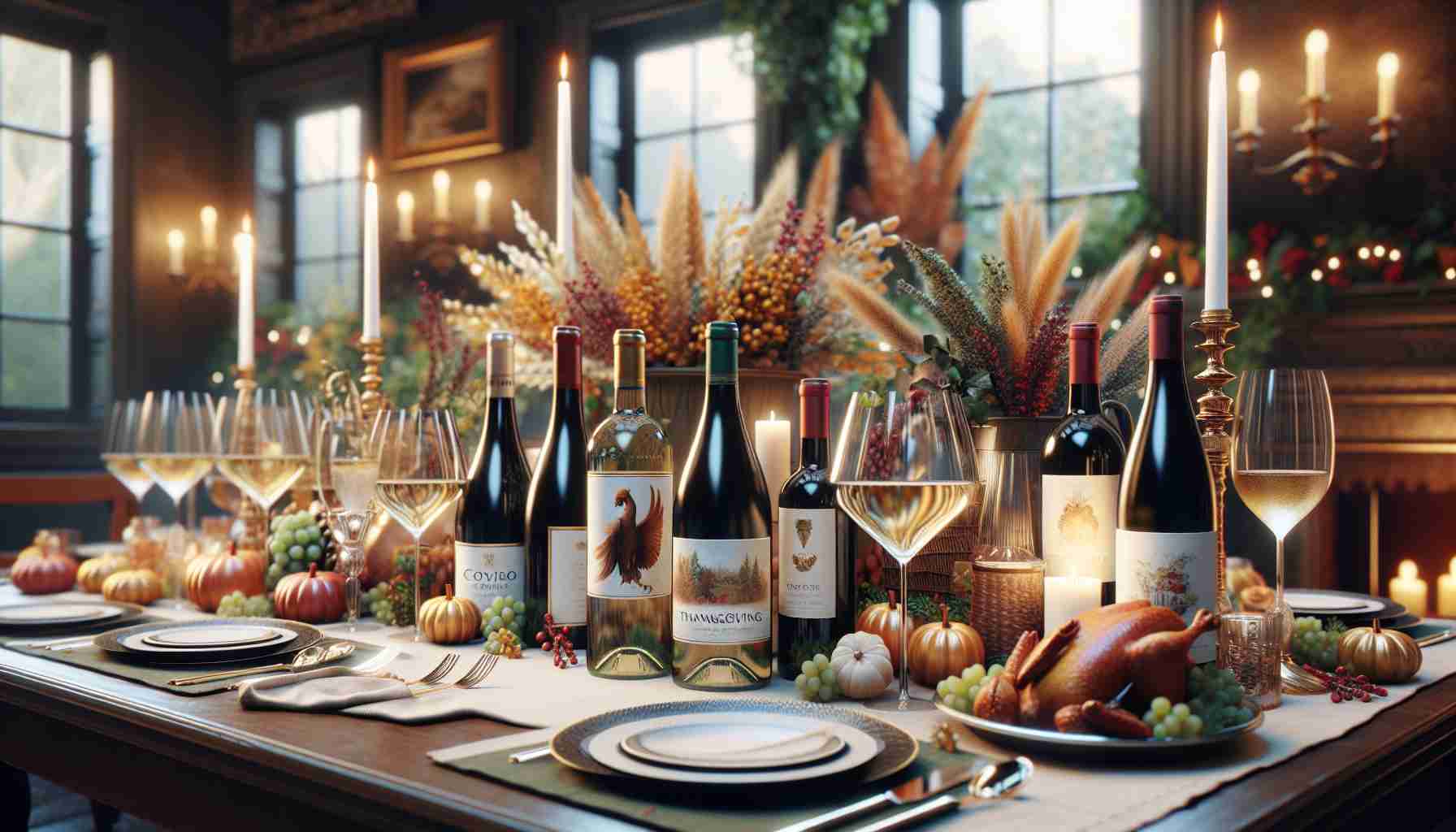Thanksgiving can be a whirlwind of activity, from cooking up a storm in the kitchen to simply enjoying a relaxed day. Regardless, selecting the right wine doesn’t need to be another stressor. To navigate the parade of Thanksgiving dishes, experts suggest opting for wines that are light, bright, and youthful, providing versatility and delight at the table.
A standout red to consider is the E. Guigal Château de Nalys Châteauneuf-des-Papes. Known for its blend of Grenache, Syrah, and Mourvèdre, this wine offers complex flavors with notes of chocolate and dark berries, suitable for a variety of palates.
If you’re drawn to lighter, aromatic options, the Bernabeleva’s Viña Bonita Garnacha is a prime choice. Originating from a picturesque region near Madrid, it boasts floral and berry aromas, making it an impeccable match for herbed dishes and poultry.
For those seeking something bold, the Poderi di Carlo Orange Pinot Grigio presents a refreshing twist with its orange hue and skin contact winemaking process, ideal for adventurous palates.
Alternatively, Bōken Nana Sake offers a sophisticated blend with high acidity, complementing the umami flavors of gravy and stuffing.
Finally, consider breaking from tradition with Peay Vineyards Les Titans Syrah, a cool-climate wine bursting with red fruit and white pepper notes, destined to harmonize with fall spices.
This holiday, allow these diverse selections to enrich your Thanksgiving feast, ensuring a memorable gathering with family and friends.
Uncorking Innovation: How Wine Science is Transforming Our Palates
In the realm of wine, Thanksgiving offers a canvas for exploring emerging trends and new technologies in viticulture that are reshaping our experience and appreciation of this age-old beverage. Beyond selecting the perfect pairing for your festive feast, there’s a fascinating world of science and innovation driving the wine industry forward, with implications for both wine lovers and technology enthusiasts alike.
Advancements in Viticulture: The Rise of Precision Winemaking
One of the most significant technological trends in winemaking is the advent of precision viticulture. Utilizing drones and satellite imagery, vineyards can now monitor the health of their vines with unprecedented accuracy. This technology allows winemakers to optimize water usage, predict grape yields more accurately, and even anticipate pest infestations before they become problematic. Such precision not only boosts the quality of the wines but also promotes sustainable practices that benefit the environment.
Fermentation Technology: Old Process, New Tricks
Fermentation has traditionally been a hands-on process, but recent advancements allow for greater control over yeast activity and fermentation temperatures. Microbiologists are exploring custom yeast strains and using genetic analysis to produce specific flavor profiles, which means winemakers can highlight particular notes or textures, thereby creating wines with distinctive signatures designed to suit diverse palates.
Controversies in Wine Labeling: Transparency vs. Tradition
With these advanced methods come questions about labeling and transparency. Should wines produced with significant technological intervention carry distinct labels? Some argue that increased information about the winemaking process could enhance consumer choice and understanding, while others fear it might overshadow traditional winemaking narratives. The push for transparency in wine labeling continues to spark debate within the industry.
The Environmental Impact: Are Eco-Friendly Wines the Future?
The integration of technology in winemaking isn’t just about improving quality or diversifying flavor profiles—it’s also about reducing environmental impact. Eco-friendly wine production methods are gaining traction, leveraging technology to minimize the carbon footprint of vineyard operations. Implementing solar panels, optimizing resource usage through data analyses, and reducing chemical inputs are becoming more common as consumers lean towards sustainable products.
Advantages and Disadvantages of Technology-Enhanced Wines
Advantages:
– Enhanced taste and aroma profiles engineered to meet consumer demand.
– Increased sustainability and resource efficiency in vineyard operations.
– Greater consistency and quality control across vintages.
Disadvantages:
– Potential loss of artisanal methods and traditional craftsmanship.
– Possible consumer confusion over technologies used and their impact on the final product.
– Ethical considerations related to genetic modifications and labeling transparency.
Curious Minds Ask: Will Technology Diminish the Charm of Wine?
Critics question whether technology might rob wine of its natural charm and rustic appeal. However, the potential to create more nuanced, high-quality wines that cater to a wider range of tastes cannot be ignored. As these innovations continue to evolve, they offer opportunities to enhance rather than detract from the traditional wine experience.
For more exploration into the evolving world of wine and other related topics, check out websites like Wine Spectator and Decanter. These resources provide insights into both the craftsmanship of wine and the burgeoning role of technology in its production.
As you celebrate this holiday season with your selected wine pairings, consider not just the flavors on your plate, but the intricate blend of science and tradition in your glass—a testament to the ongoing evolution of both technology and taste.
